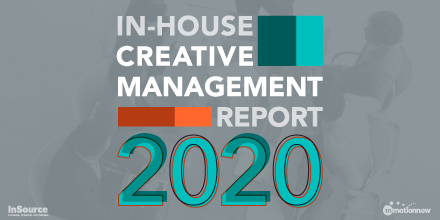As is my tradition before an InSource event, I like to take the featured speakers out to dinner the evening before as a way of thanking them for their time and insights. I try to find a higher-end restaurant where we can enjoy a great meal (not just a good one) and an ambiance that would support great conversation. Such is the case the night before our Seattle event, back in March when I broke bread with Hafiz Huda (creative director at Amazon.com), Erik Davidson (director, brand and design at Vulcan Inc.) and Kevin Mau (brand and creative strategist at Boeing) over seafood and cocktails down by the wharf.
The four of us sat down at the table and started talking about everything from work, family, and naturally design and managing people. The conversation was lively, funny, thoughtful, and engaging, as you would expect from a group of people who are passionate about what we do. But the dinner conversation also left me thinking even more deeply about the career path of a designer than I had before. During the course of the conversation we each talked about our careers, where we started, and how we got to where we are, that included musings on getting into—whether by choice or not – the management of creative teams. And then we started discussing the fact that we are each at a certain age and experience-level, and may perhaps be ready for something…else. No, “something else” wasn’t right we agreed, it was more about “What’s next?”
As the discussion of our careers and experiences continued, we began formulating a metaphor for the phases of a creative career that naturally follow ancient paths of many trades: Apprenticing, Mastering, and Master. Apprenticing is when you’re just starting out, learning as much as you can from a Master at the craft (like the department creative director) to get better at what you do. Mastering is the when where you’re approaching the 10,000 hours of practicing your craft, and on your way to becoming a Master yourself. Master then, is when you’ve now got apprentices of your own to coach and grow (this is when you’re managing people). Trust me, when I say that its taking all I have to refrain myself from Star Wars and Jedi references right now!
But what comes after managing people (being a Master) took up the bulk of our dinner conversation. What’s next for design leaders when they’ve reached that sought-after pinnacle of creative leadership—Director of Creative Services—and held it for a number of years? When you’re ready to move on to a new challenge, is it simply getting a new job and doing the same thing for another company? At this point of being a Master is it just simply “rinse-and-repeat” for the rest of our careers? Or is there a fourth leg of the career journey? We pondered that and decided perhaps it’s simply the “Post-Mastery” phase.
Considering it takes 10,000 hours (that’s almost 5 years if you work at it every single day) to become a Master, then for those of us at this for 20+ years, Post-Mastery comes after a long successful career … but we’re ready to move on. Not retirement mind you, but maybe not managing others anymore either. You may also have reached a point in your life where the reasons for working (I discussed the reasons creative people choose to work for a living: stability, money, advancement, and passion in a previous article) have changed too.
So, what’s next for the creative leader? What is the Post-Mastery phase of our craft comprised of? Well, my standing answer is of course—it depends. Maybe for you it is yet more advancement up the corporate ladder to super-executive-chief-creative-grand-poo-bah. Or maybe it’s not leading people at all, yet still finding a way to influence creativity in the company you work for. Or maybe it’s time to hang out your shingle and start your own agency (or be a freelancer if you don’t want employees). It really depends on what you want to do with the mastery and experience you’ve earned over the years. How do you want to influence others with your talent and expertise?
In part two of this article, I plan to explore some of those options based on conversations I’ve had with several in-house design leaders over the past year. Some of whom have figured out “What’s next” and some who are still working on it, but have ideas.
How A Consulting Mindset Will Take Your Department From Order-Takers To Creative Problem-Solving Rock-Stars!
I've written about some lessons learned while working in-house that made me a better consultant and business owner. Now, I'm turning the tables and following up with some ideas for what I think helped shape my success when I was an in-house, corporate, creative. I...





